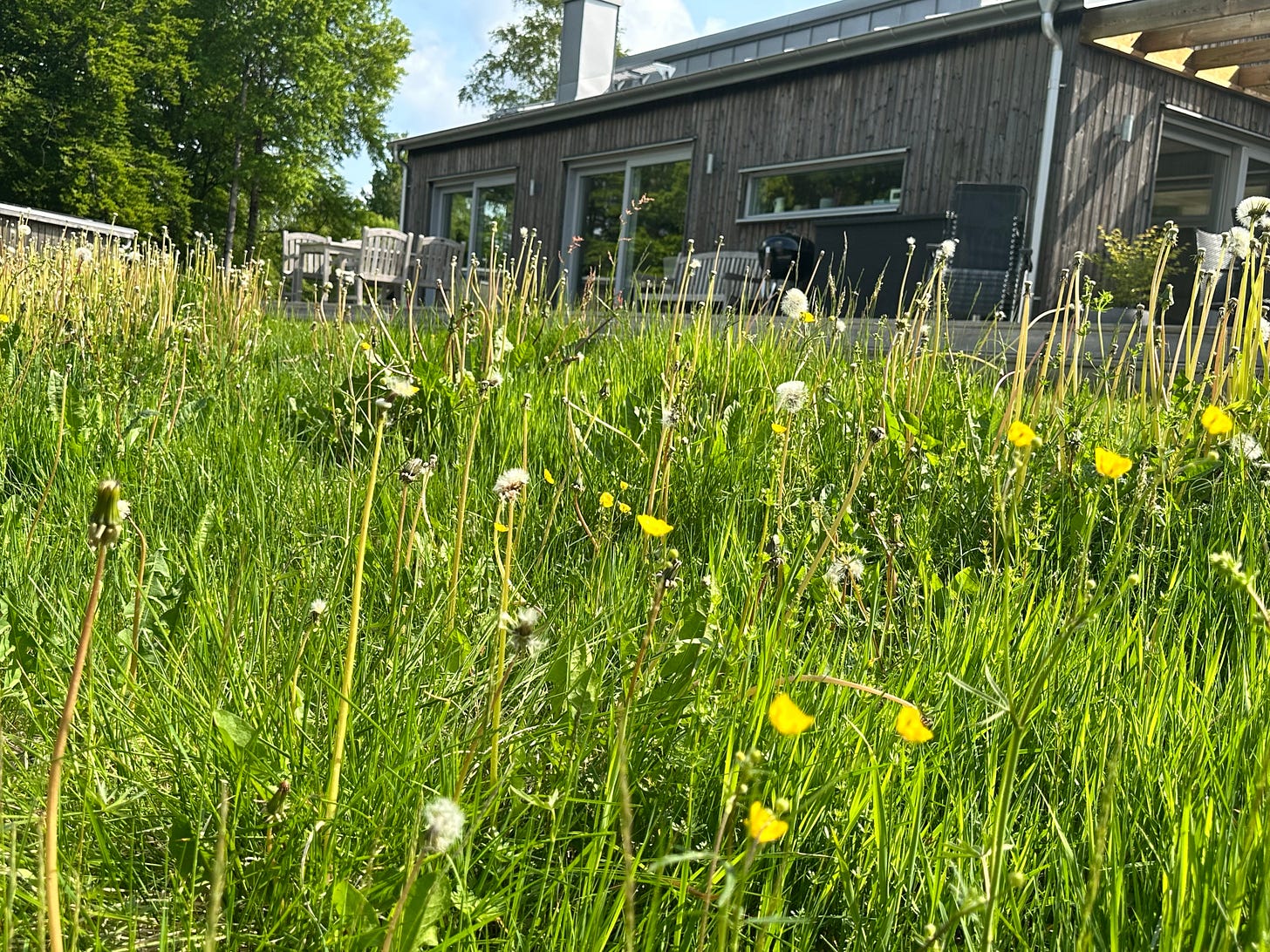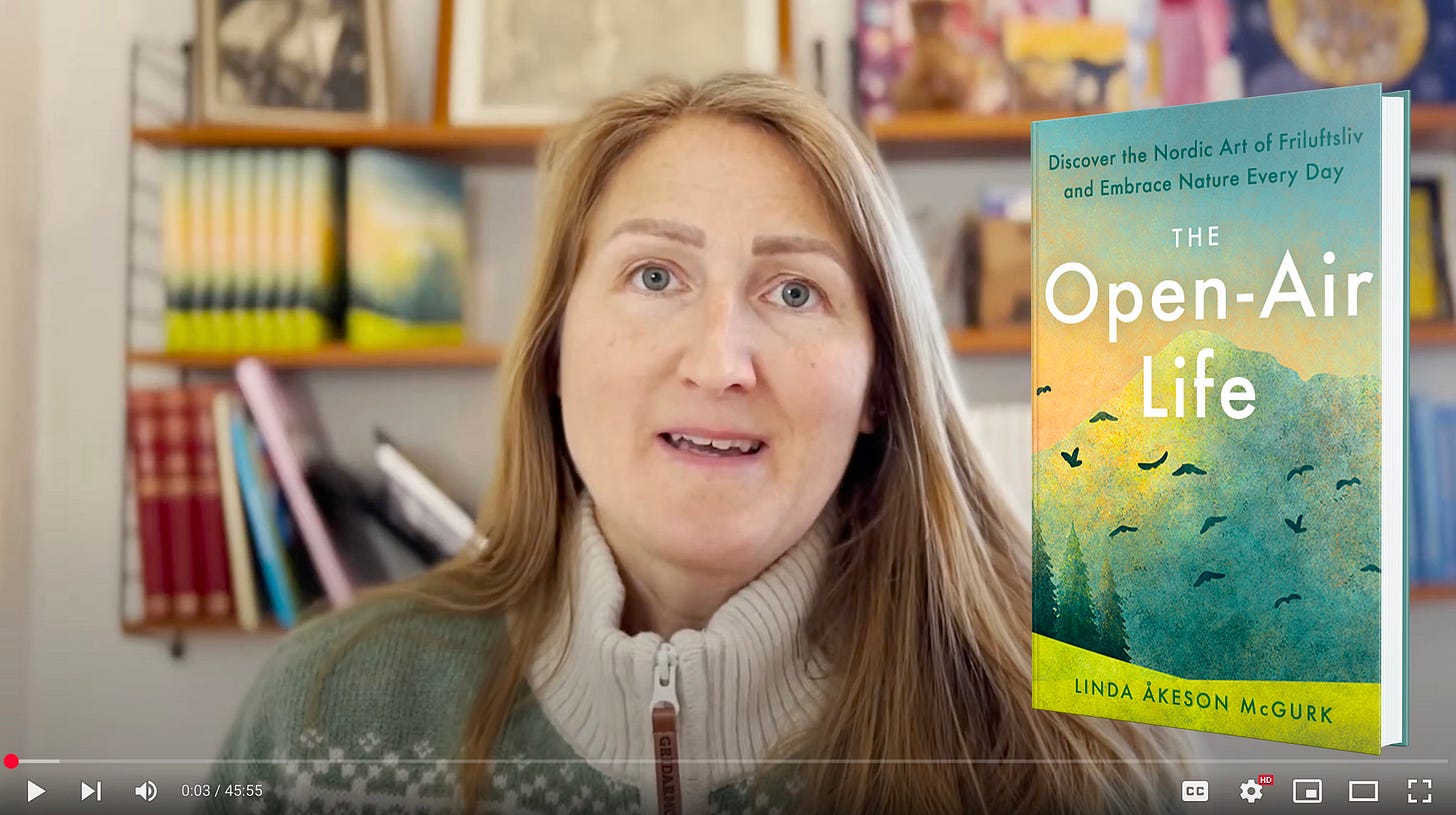The perks of being a lazy gardener
Rewilding is the new trend in gardening and urban landscaping - let's make sure it sticks
I was just slowing down to stop at a red light, on my way to a speaking engagement north of Indianapolis, when I saw a mowing crew at work to the left. A man on an oversized riding mower, donning head protection and a sweaty, yellow tank top, was doing laps across the grass-covered median. Looking closer, I noticed the grass was sprinkled with bell-shaped, blue wildflowers, waving gently in the wind.
But not for long.
Before I knew it, the man on the mower had run over them, reducing the beautiful wildflowers to green stubble sprinkled with blue confetti. A voice inside me cried out, “No!” but of course there was nothing I could do. The man was just a city worker doing his job.
The problem is, we’re so used to bending the natural world to fit our arbitrary preferences today, that most people wouldn’t even bat an eye at this scene. We expect public green spaces to be neatly manicured, with no regard to wild plants and the pollinators that benefit from their presence. They’ve simply been reduced to weeds, destined to be removed. An endless battle fought every year, with mowers, clippers and – worse – Roundup.
The hidden benefits of lazy gardening
I came to think of the man on the mower as the growing season in my own backyard began in earnest this month. We have a rather large yard and for years, my husband and I have been struggling to get the robot mower (these are common in Sweden) to cut the grass without getting stuck on the uneven ground and steep hills. Last year, we decided that it wasn’t a battle worth fighting and reduced the size of our yard considerably to avoid the problem areas. This year, we decreased the mowed area even more, leaving just a small front lawn, a narrow strip by the deck on the back of the house and some paths around our raised bed garden.
I’m so happy we did.
With a smaller area to mow, the time we spend on troubleshooting the mower has decreased considerably. But more importantly, the dandelions, buttercups and other wildflowers that have flourished in the rewilded areas have given pollinators an important food source at a crucial time of the year when resources are usually limited.
Lazy gardening for the win!
While we were just being practical, I was happy to see that “wild gardening” is one of the top gardening trends this year. This less-is-more approach to gardening and urban landscaping encourages people to free themselves of the notion that everything has to look neat and tidy. It allows us to let go of control – and for a good cause. Wilder greenspaces mean fossil fuel and herbicide use will decrease, while biodiversity will increase. Plus, greenspaces with higher biodiversity are believed to be more restorative, which is good for our mental well-being and strengthens our connection with nature.
Rewilding - one patch of dandelions at a time
Of course, there are benefits of mowed open spaces where people can gather, play and have picnics. But I do hope that the wild gardening trend will take hold and park departments will go a little easier on the mowing in the future.
As for the rest of us, we can start small. Let a patch of dandelions bloom. Skip a mow. Plant a few native flowers in a container on your balcony. Rewilding doesn’t require a meadow – it just takes a mindset shift. If enough of us start questioning the need for perfection and allow a little more chaos back into our landscapes, we might just create a patchwork of habitat that adds up to something meaningful.
One thing to contemplate
In a world obsessed with tidiness, choosing to let something grow wild might be the most radical act of care.
Two things to listen to
1. In her popular TED talk, environmental writer Emma Marris urges us to reconsider how we define ‘nature’ to include urban patches of weeds and not just pristine wilderness. The part where she compares the wildness of an overgrown urban lot and a carefully managed national park is an eye opener.
2. I was interviewed for the Ignited Neurons Podcast recently, where I talk about everything from the healing power of nature to raising resilient children.
Three things to do outside
1. Canadian ecologist Suzanne Shimard shines a light on the secret lives of trees in her excellent memoir slash scientific exploration of forests, Finding the Mother Tree. Who would’ve known even fungi have agency?
2. From the blog archive, I give you: The Top 5 Reasons to Garden with Kids – Even If You Have a Black Thumb (and believe me, I do). In this post, you’ll find out why gardening makes us happy, how to turn a tomato horn worm infestation into something positive and much more.
3. I felt some much-needed hope reading an interview in Outside with Colorado Senator John Hickenlooper, who is one of the lawmakers leading the charge to protect public lands in the U.S. He says: “We’re going to fight, we may be beaten, but we will rise and fight again. We’re going to lose a bunch of battles on this thing, but I think that if we rise and fight again, we are going to win.” Read the whole interview here.
Buy The Open-Air Life and get access to closed webinar
My second book, The Open-Air Life: Discover the Nordic Art of Friluftsliv and Embrace Nature Every Day, is about to hit an important milestone! To get there, I’m offering a special treat if you order a copy by June 15 - a link to my closed webinar Woods Over Worksheets on setting children up for success through outdoor learning. Just order the book from one of the links below, or a bookshop of your choice, then email me a copy of the receipt, and I’ll send you a private link to the webinar.
Bookshop
Amazon US
Amazon CA
Barnes & Noble
See you outside!
Linda
Some housekeeping…
If you can’t find my newsletter, check your spam folder. And please mark this address as ‘not spam.’ If the newsletter isn’t in your spam folder either, you should look in the Promotions tab.
You can always read my posts on my Substack home page.
You might also like…
We weren’t made for a spring like this one
These are OUR lands - and they need us
Do not disturb, do not destroy
Before you go...
I have a curated selection of some of my favorite children's outerwear at Outdoor School Shop. When you shop through the link, I earn a small commission at no extra cost to you. Check out the Rain or Shine Mamma shop at ODSS here.
I've published two books: There's No Such Thing as Bad Weather and The Open-Air Life. If you enjoyed them, you can help others find them by leaving an Amazon review here and here respectively.
I often get interviewed about outdoor play and nature connection at various podcasts. You can find all the episodes I've participated in here.
Do you have a book club or head up a nature play community? I love doing virtual author visits! Just hit reply to this message to connect.
I do virtual speaking events for corporations, non-profits and online summits. You can read more about that here.
Do YOU have something going on in the nature connection space that you think this community should hear about? If so, hit 'reply' and let me know what you're up to - I'd be happy to share!



